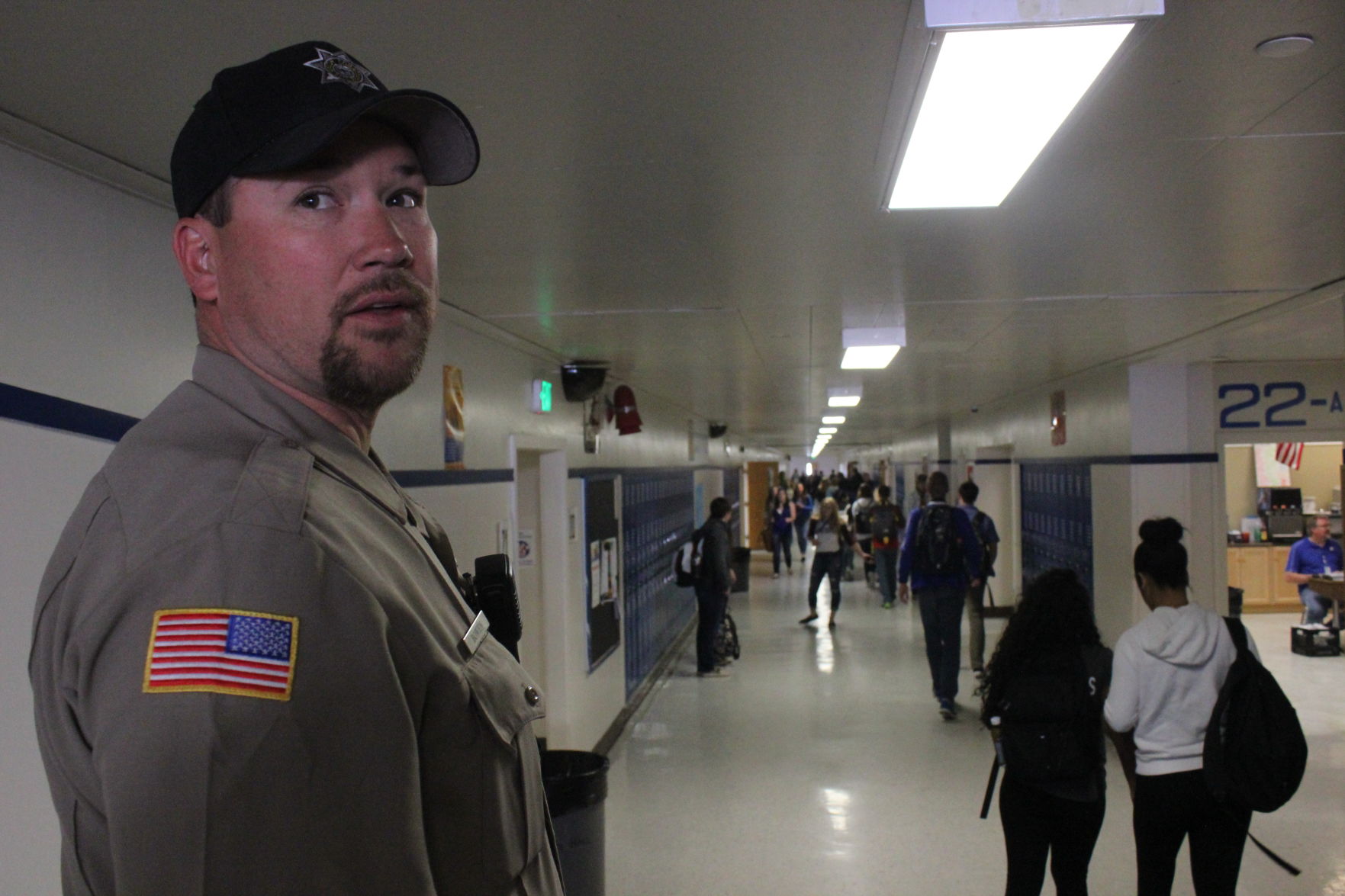Baker City doctors ‘stunned’ by birth center closure
Published 3:00 pm Sunday, June 25, 2023

- Saint Alphonsus Medical Center-Baker City has been at its current location, 3325 Pocahontas Road, since 1970. The Boise-based health system on Thursday, June 22, 2023, announced the Baker City hospital’s birth center would shut down at the end of July.
BAKER CITY — The six doctors who among them have delivered hundreds of babies in Baker County sat around a table stunned and worried.
Trending
They were stunned by the announcement that Saint Alphonsus Medical Center-Baker City, the county’s lone hospital, would close its birth center July 30.
They were worried about their patients.
“It’s extraordinarily upsetting to us,” said Nathan Defrees.
Trending
“This will dramatically affect care for some of the least financially secure families in our community,” Neil Carroll said. “There will be more home deliveries, or in the emergency room or an ambulance.”
Those are families, he said, who can’t afford to spend the last couple weeks of a pregnancy living in La Grande or Boise so they can be close to the hospital where their baby will be delivered.
Carroll and Defrees were joined early Thursday evening, June 22, in a conference room at St. Luke’s Medical Center/Eastern Oregon Medical Associates (EOMA) by Lily Wittich, Trisha Eckman, Daniel Smithson and Eric Lamb.
All six work at EOMA, not at Saint Alphonsus.
But each relies on the birth center, or has in the past, to provide the equipment and nurses that contribute to a safe delivery.
Defrees, Carroll, Eckman and Wittich all offer maternity care as part of their practices.
Smithson and Lamb no longer do so, but both delivered many dozens of babies at the Baker City hospital earlier in their careers.
All six said they believed that the hospital would continue to operate a birth center.
“I never expected this to happen,” Smithson said. “We’ve been incredibly blessed in the county, the obstetric care that’s been provided here is as close to the best that we see anywhere.”
The hospital dates to 1897, when it opened as St. Elizabeth Hospital. The current building, at 3325 Pocahontas Road, opened in 1970.
Trinity Health of Michigan bought the hospital in 2010 as part of the Saint Alphonsus Health System, which includes hospitals in Boise, Nampa and Ontario.
Eckman and Wittich said that after Saint Alphonsus closed the intensive care unit in the Baker City hospital in January of this year, an emphasis during meetings between the EOMA physicians and hospital management was on keeping the birth center operating.
“Until yesterday,” Wittich said.
Hospital staff met with the doctors on Wednesday, June 21, to give them advance notice of the birth center’s closure.
Saint Alphonsus officially announced the pending closure with a press release issued about 12:30 p.m. on June 22.
Fewer deliveries, higher costs
In announcing the birth center closure, Saint Alphonsus noted that deliveries in Baker City “have declined at a record rate.”
There were 128 babies born at the hospital in 2020, with a projected total of 75 in 2023, according to Saint Alphonsus.
Birth data from the Oregon Health Authority don’t show such a significant trend, although those statistics are for the entire county and not broken down by birth location, such as hospital or home birth.
According to OHA, the yearly birth total in Baker County averaged 161 from 2010-21, with a range of 142 (2015) to 180 (2013). The rate has been much flatter recently, ranging from 150 to 159 from 2017-21. OHA hasn’t tallied births in the county for 2022.
Wittich pointed out that America’s birthrate has been declining nationwide.
According to national statistics, there were about 600,000 fewer births in 2019 than in 2007, a 13% decrease. After a brief boost in birth rates during the pandemic, the downward trend has resumed, according to research by the Brookings Institution.
But Wittich said a local analysis has shown that very few Baker County women choose to deliver their babies outside the county.
A small number of women also have to travel to a different hospital due to medical issues that require a higher level of care due to potential complications, the EOMA doctors said.
Carroll noted that the number of births in the Baker City hospital has always varied, and that a four-year trend isn’t definitive.
He said Saint Alphonsus administrators told EOMA doctors that Baker County has an aging population and is a not a “birthing community.”
But the doctors, for whom maternity care makes up about 15% to 25% of their practices, are skeptical that the recent decline in local deliveries drove the decision to close the birth center.
“It’s 100 percent financial,” Defrees said. “It’s a headache (to the hospital to operate the birth center).”
Saint Alphonsus also cited, as a factor in the pending closure, an “increasingly unsustainable crisis in our ability to staff the Obstetrics Department adequately with temporary or permanent staff to meet staffing requirements — even with significantly high agency compensation rates. The urgency of the situation has escalated due to recent staff resignations and changes.”
The EOMA doctors, though, attribute some of those resignations to what they perceive as a lack of commitment by Saint Alphonsus to maintain the birth center.
The doctors acknowledge that maternity care typically is not profitable for hospitals.
“It’s expensive care, but it’s absolutely necessary care,” Carroll said.
What’s nextThe EOMA doctors said that without a birth center at Saint Alphonsus, there are no other viable options for maternity care locally.
They said they can continue to provide prenatal care, and treat mothers and their babies are delivery, but to deliver babies a facility must be licensed and have a variety of services, including anesthesia, available at all times.
A medical clinic such as EOMA can’t do that, they said.
Although women in labor could go to the Saint Alphonsus emergency room to have their babies, the EOMA doctors said that’s not an ideal situation.
Ultimately, they said, most pregnant women will need to go to a different hospital. The nearest is Grande Ronde Hospital in La Grande, about 43 miles away.
But during winter, Eckman noted, that distance is meaningless if Interstate 84 is closed and weather prevents aircraft from flying.
Although the doctors said the vast majority of deliveries are routine, when problems arise the danger to the mother and the baby can be immediate.
“It goes south fast,” Eckman said.
“And usually there’s no warning,” Carroll said.
The doctors all had stories of delivering babies from mothers who aren’t from Baker County but went into labor while traveling through the area — including, they said, a number of Greyhound bus passengers.
Lamb, who is Baker County’s public health officer, said the loss of a birth center at the Baker City hospital will result in “increased morbidity and mortality in women and babies. That’s a concern from a public health standpoint.”
“How many deaths do we have to have?” Carroll said.
The EOMA doctors pointed out that the birth center at Saint Alphonsus does much more than give women a place to have their babies.
The hospital also helps new mothers with breastfeeding, and encourages safe infant sleeping practices, including avoiding “co-sleeping” with newborns, which has resulted in several babies dying in Baker City after being accidentally smothered by a sleeping parent or other adult.
Although the EOMA doctors said they could seek admitting privileges at other hospitals, which would allow them to attend to Baker County patients and deliver their babies elsewhere, they think it’s unlikely that many women would choose that option.
Nor do the doctors expect that a large number of women would have prenatal care in Baker City but then go to a different hospital to have an unfamiliar doctor deliver their babies.
“Most women want their prenatal doctor to also deliver their babies,” Wittich said.
The doctors anticipate that the closure of the birth center will have a ripple effect throughout the community.
Smithson expects the closure will make an already challenging task even more daunting — recruiting doctors to Baker City.
He said he has had three recent candidates, all of whom want to have a family practice that includes obstetrics.
Carroll, who moved to Baker City nine years ago, said he would have gone elsewhere if there hadn’t been a birth center at Saint Alphonsus.
The EOMA doctors say the birth center closure will affect their pediatric practices as well as the maternity care.
Carroll anticipates a “dramatic drop” in pediatric patients. The reason, he said, is that many mothers will likely choose to have the doctor who delivered their babies continue to care for the children as they grow.
All the doctors said they have seen that tendency in their practices.
Carroll said that after delivering a baby he has often ended up treating all their members of that family.
Galvanizing the communityThe EOMA doctors said the pending closure of the birthing center is the latest, and most troubling, in a series of changes at the hospital. Those include the closure of the intensive care unit and resignations in the nursing staff at the birthing center.
“The hospital is not functioning well right now,” Defrees said. “They’re cutting out services that lose money and shipping people to their larger hospitals.”
“All decisions are financially motivated rather than what’s best for the community, it feels like to me,” Carroll said. “There’s a lack of community commitment.”
“The community is losing faith in Saint Alphonsus,” Eckman said.
The doctors would like to see changes, including the possibility of Saint Alphonsus selling the Baker City hospital.
Defrees said it’s even more difficult to accept the reductions in service at Saint Alphonsus while at Grande Ronde Hospital, which is privately owned and not part of a larger health care system, is building a 96,000-square-foot, $72.5 million expansion.
“Seeing success so close,” Defrees said.
The doctors said another potential option might be a public health district funded by local property taxes. That’s the model that hospitals in Burns, John Day and Enterprise use. All are in much smaller communities but all have birthing centers.
Ultimately, the doctors said, any changes in Baker City will be prompted by residents.
“The community needs to tell Saint Alphonsus what they want,” Defrees said.
Wittich agreed.
“Our most fervent hope is that people in the community will recognize that this is a service the community wants and will rise up and say this isn’t acceptable.”
“This will dramatically affect care for some of the least financially secure families in our community. There will be more home deliveries, or in the emergency room or an ambulance.”
— Dr. Neil Carroll, St. Luke’s Medical Clinic/Eastern Oregon Medical Associates
“Our most fervent hope is that people in the community will recognize that this is a service the community wants and will rise up and say this isn’t acceptable.”
— Dr. Lily Wittich, St. Luke’s Clinic/Eastern Oregon Medical Associates









